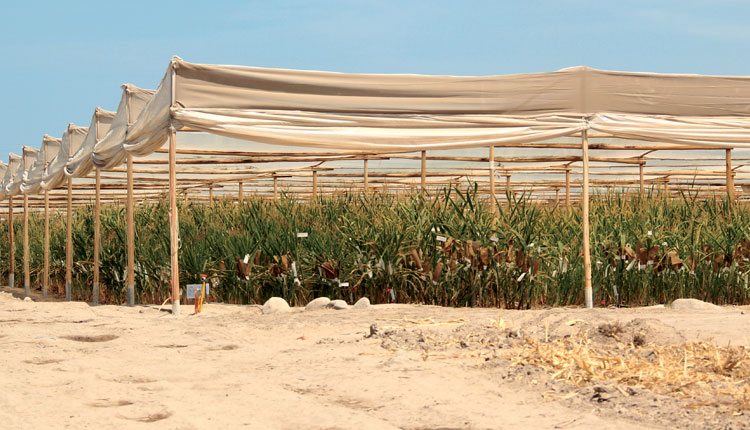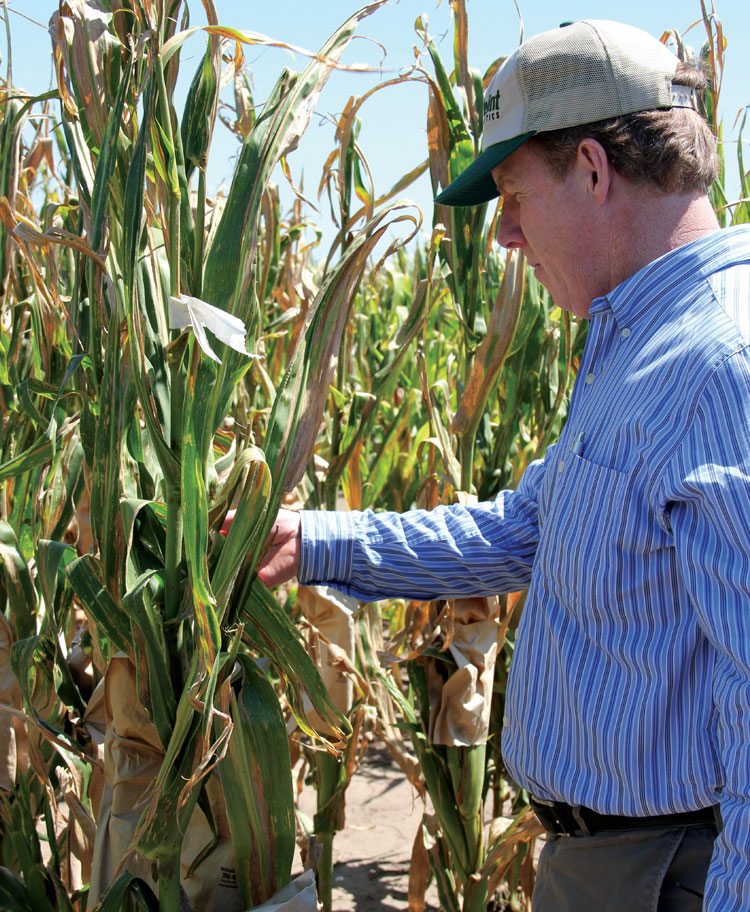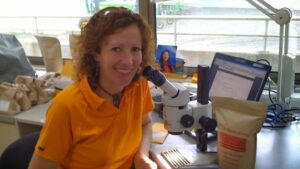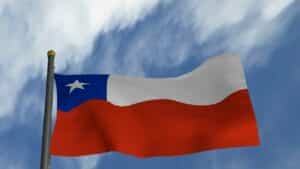Winter breeding locations accelerate varietal development.
When the growing season in North America comes to its annual end, plant breeders, like sun worshippers everywhere, pack their bags and head south for warmer climes. Their bags are not necessarily packed with snorkeling gear and boogie boards. Rather, plant breeders pack their tweezers, camel hair brushes and little specimen bags.
They are not packing for vacation; the purpose of their journey is to continue the propagation of new varieties of row crops, vegetables, ornamental plants and other species that would normally be shelved for six months while awaiting the spring thaw.
Many seed companies accelerate their breeding programs by using winter nurseries in South America, cutting the time it would take to bring a new variety to market in half. Winter nurseries used by northern hemisphere seed companies can be found in most Latin American countries including Argentina, Brazil, Chile and Uruguay. Mexico, Guatemala, Hawaii and Puerto Rico also host significant winter breeding activity.
“The primary advantage of a winter nursery is that it provides an opportunity to collect data from the current season (in October) and use that data to make new hybrid combinations in the winter to be returned in time for spring planting the following year — significantly reducing the time it takes to commercialize a new corn hybrid,” says Dwight Bostwick, head of Syngenta’s North American corn breeding projects.
Michael Martin, Monsanto’s Multi-Season Program lead, agrees. “Rapid cycle time enabled by winter breeding nurseries and seed production operations is one of the greatest benefits,” he says. “Multiple generations of self-pollination or ‘selfing’ and selection are required to breed any new hybrid or varietal crop. The number of generations can be as extensive as nine to 12 from the time a new breeding cross is made until the newly created product is commercialized for our customers.”
Martin explains that if Monsanto only took advantage of the North American growing season, the cycle time could be as long as nine to 12 years for a new product. “The decrease in cycle time increases our rate of genetic gain and the rate in which we can commercialize new products,” he says.
But shrinking the development timeline isn’t the only reason seed companies look to South America.
“At AgReliant, we use numerous counter-season sites to spread our risk and ensure top quality test seed,” says Tom Koch, AgReliant Genetics vice president of research. “Each site offers its own unique set of advantages and challenges. Our main South American sites are located in Argentina and Chile.”
What factors come into play when choosing a site?
Most business owners, or any friendly realtor, will say that location is everything. The same can be said for winter nurseries. Locations share some characteristics that make them ideal for winter production.
Koch says an ideal winter production site is difficult, if not impossible to find.
“We look for a site that can offer the most advantages with the least amount of risk,” he says. “The site must be able to efficiently provide seed when it is needed in North America. Tropical locations tend to offer the highest level of flexibility of planting dates, often allowing year-round production.
“Unfortunately, these sites tend to have year-round disease and pest pressure, as well, creating the need for effective management strategies. Our genetics are well adapted to the growing conditions of North America, which can be different from sites in South America. Climate, soil conditions and pest pressure can all vary. Additionally, anytime seed is being grown in another country, local laws and regulations must be followed. This can include import/export requirements or differing biotechnology regulations.”
Jose Luis Hernandez, who serves as research director for DuPont Pioneer, says the company has more than 100 breeding centers in 25 countries around the world. “There are a variety of environmental and social factors we consider,” he says.
Experts agree there are four primary characteristics that make a winter nursery location ideal: the climate, infrastructure, regulatory environment and a skilled workforce.
Climate
“We look for favorable environments for seed production, in particular climates with high temperatures, high levels of solar radiation and low humidity,” Hernandez says. “This allows us to maximize seed production, as well as study the impact of heat stress and production under limited irrigation regimes, selecting for the best products to meet the global demand for seed.
Bostwick says Syngenta looks for locations that are not too hot and where water can be managed, either with irrigation or in a location that does not have excessive rainfall during the critical portion of the year. “Some locations have higher humidity that can increase the amount of mold on the seed — making timely harvest essential,” he notes.
What’s best for one crop might not be best for another, Martin adds. Environmental conditions such as soil type, water, temperature, day length and solar radiation should match what’s best for production of the desired crop.
Additionally, it’s important to recognize that some germplasm does not work in some winter nursery locations. “Early germplasm that you would find in Canada, Wisconsin and Minnesota does not do well in places such as Puerto Rico, while later germplasm that you would find in Missouri, southern Nebraska/Iowa/Illinois does not do as well in central Chile,” Bostwick explains. “We have to do a good job of matching what germplasm goes to which winter nursery location. The later material is planted in winter nursery, the more the quality and quantity of seed generally goes down. Timely planting is needed.”
Martin expands upon this notion, saying: “The cropping season should be synergistic with the cropping seasons in North America. This is so planting can take place in the winter location following harvest in North America, and following winter harvest, the seed can be shipped before the next planting season.”
Infrastructure and Regulatory Environment
Another characteristic that must be considered is a country’s infrastructure.
Hernandez says DuPont Pioneer takes into consideration the ability to move seed into and out of a country. “Moving seed from one country to another can be challenging, so we look for countries with established and reliable agriculture infrastructure and shipping channels,” he says.
Essentially, this comes down to speed — how quickly the crop can be produced, from planting to harvest, and shipped.
Coupled with a country’s infrastructure is its regulatory environment.
“It’s critical to work in countries with a favorable regulatory and business climate, including stable governments and regulations that promote research investment by protecting intellectual property,” Hernandez says.
Martin agrees. “Stability in the political and economic conditions in the country being considered for winter production is important due to the various phytosanitary and regulatory policies associated with moving seed around the world,” he says.
Turnaround timelines are tight, and any delay in fall harvest can delay the return of seed from a winter nursery and can cause a delay in spring planting, Bostwick explains.
Bostwick adds that inflation or exchange rates in some countries can fluctuate dramatically. That can have a significant impact on the cost of materials produced in winter nurseries, which must be taken into consideration.
One should also note whether a location accepts GM technology for research and planting. “Places such as Hawaii have become more challenging due to local or additional regulations around GM traits and other farm management/agronomic practices,” Bostwick says. “Some locations do not permit GM traits, so we must ensure the material we ship into the country does not contain GM traits.”
A Skilled Workforce
Even with a sound infrastructure and dependable, transparent government, a wintery nursery cannot enjoy success without the right people. Hernandez says DuPont Pioneer heavily considers the ability to attract and retain the necessary workforce. It’s important to be able to find good quality and skilled local labor at a reasonable cost.
“Quality local labor can be challenging in some locations,” Bostwick says. “And there can be government/labor disruptions from time to time. It is not uncommon to have a short labor strike in some countries such as Chile and Argentina, when moving seed in or out of the country.”
Hernandez says DuPont Pioneer employs a variety of workers, from doctoral scientists to skilled lab technicians to full time and seasonal field workers. “We work with local authorities to ensure we are complying with local labor regulations and also providing a safe work environment,” he says.
Hernandez notes that each location brings unique agronomic, phytosanitary, regulatory as well as labor availability considerations. “All of them can be properly managed by assessing risk the right way in each situation,” he says.
Country Specifics
Martin cites Chile as a country that offers specific advantages for winter nursery operation. “Chile has been a reliable country for Monsanto as well as for other seed companies’ winter seed production for a long time for corn, soybeans, canola, vegetables and other crops,” Martin says. “Chile has the advantage of ideal growing conditions for most row crops including winter breeding nurseries as well as commercial seed production. Chile has stable and known phytosanitary and regulatory policies in place for biotechnology traits. Its political and economic policies have been relatively stable as well.”
Martin notes that a long growing season is the one disadvantage for Chile.
“There is only one crop production cycle per year and production of long-season varieties can be a challenge to return to North America in time for spring planting,” he says, explaining that it’s desirable to get multiple cycles of product advancements before returning it for field testing in North America. “In Brazil, you can conduct multiple cycles of production per year; however, phytosanitary restrictions on seed movement between countries limit the potential for winter breeding nurseries or seed production for North American based operations.”
Monsanto and other companies have used Argentina for both commercial winter seed production as well as for winter breeding nursery operations. “The country has vast agricultural lands suited to soybean, corn, sunflower, sorghum and other crop production,” Martin says. “The growing season is longer-season and, at times, it may be difficult to turn production cycles in time to benefit operations in North America.”
“Every location offers its own unique sets of challenges and rewards,” says Koch. “Some, such as Brazil, can be more difficult to have seed enter the country. Others, such as Peru, do not allow corn with biotech traits. Northern Chile is one of the driest areas on earth, a stark contrast from Hawaii with the wettest spot. The same corn is grown in both areas.”
Giving Back
“Having flexibility with seed production has led to improvements in our yield and product performance,” says Koch, noting that reduced cycle time and increased amount of testing directly contribute to genetic gain. But perhaps as important are the experiences and relationships that are formed with colleagues abroad.
“In every single location we strive to be, act and behave as good neighbors,” Hernandez says. “We try to connect to our communities and engage with our neighbors.
“For instance, we have an effort to preserve the Arica hummingbird, the smallest bird in Chile. Employees invest time and work on restoring its habitat, and provide water along its flying routes. We also engage with the community through initiatives such as recycling, community gardens, involvement on community sports, high school and college agriculture and biotechnology summer camps, and safety and health days with employees and their families.”
Conducting plant breeding, seed propagation and other types of crop field research beyond the borders of one’s native land can provide a host of opportunities. “Because of the time necessary to work with the products, our staff often immerses themselves in the local culture and community,” Koch says. “Repeatedly, our employees refer to many in South America as friends, be it coworkers, contract employees or even local business people.”
Learning about another culture, or about the intricacies of another country’s rules governing agricultural research, provide seed company personnel with unique experiences.
“We have had employees in multiple earthquakes in Chile and there is often talk regarding the possibility of uncovering centuries old mummies near growing locations,” Koch says. “The unique environment, both in terms of growing conditions and local culture, make South American seed research and production an exciting challenge and rewarding opportunity.”














